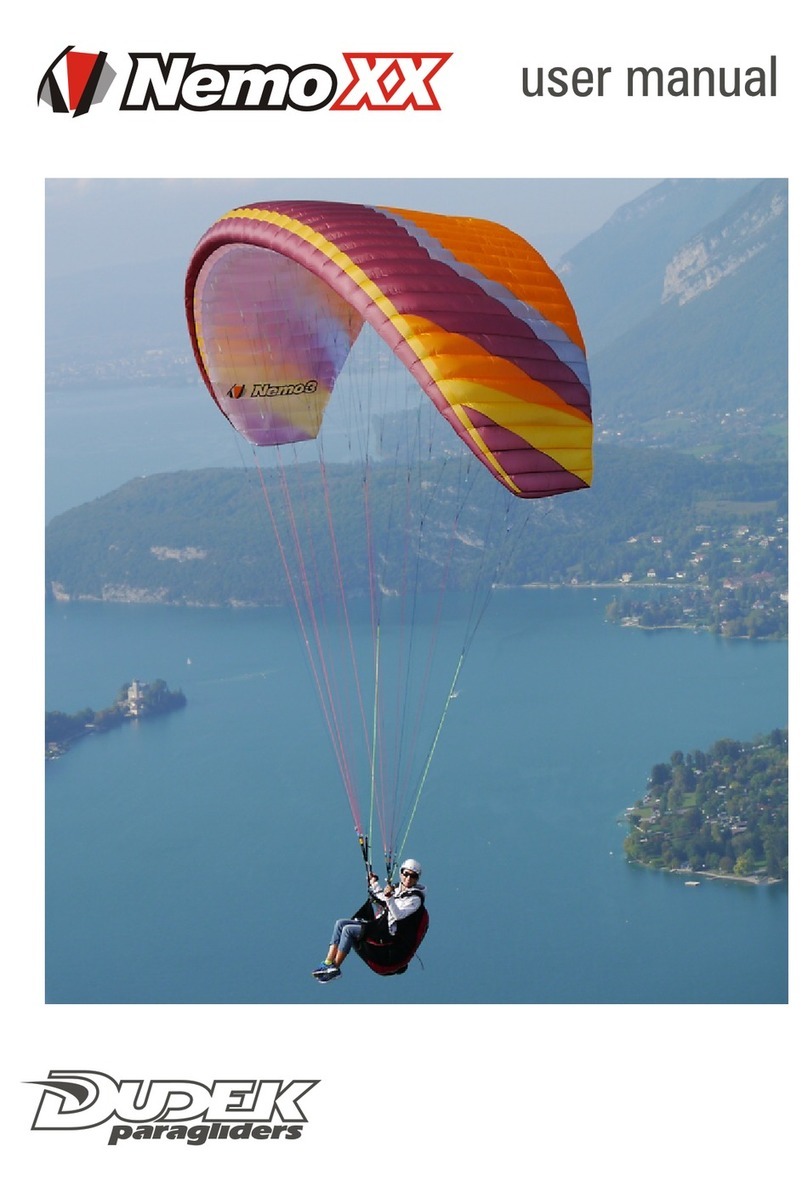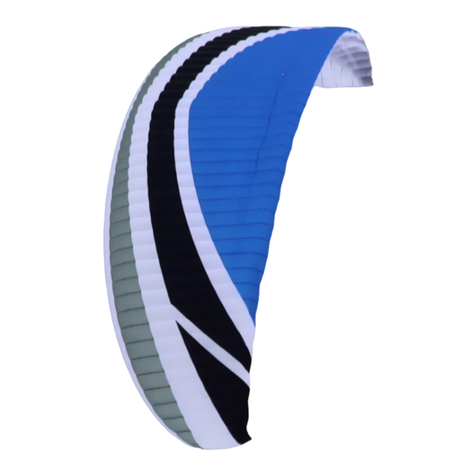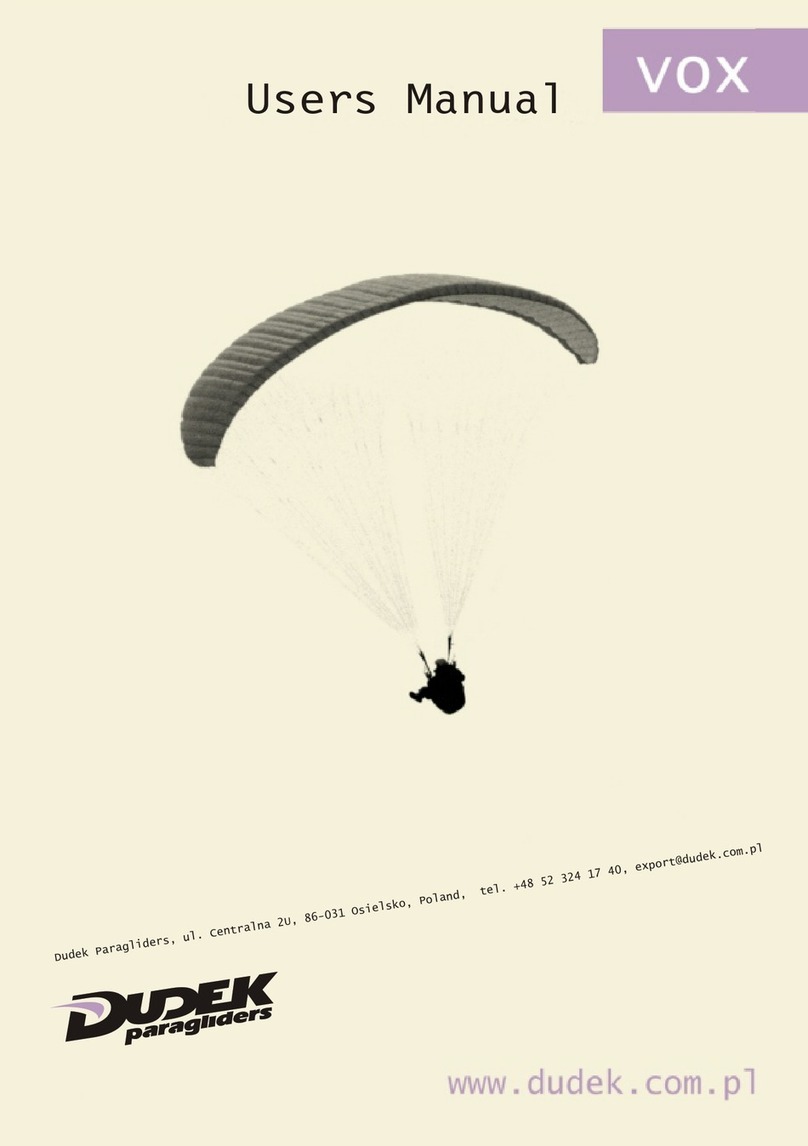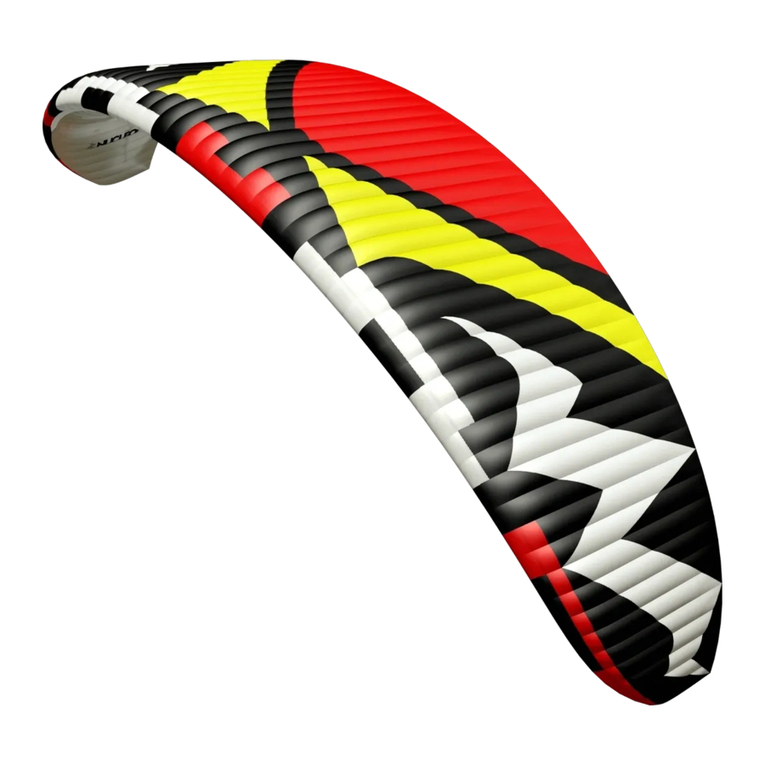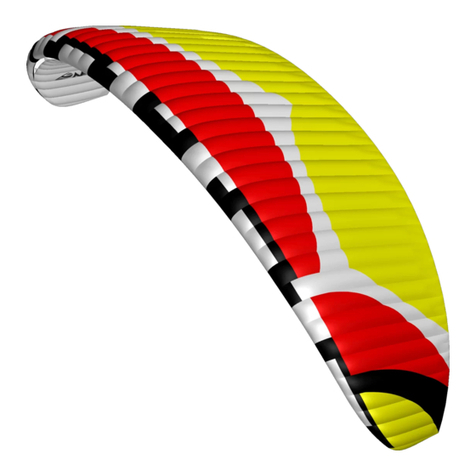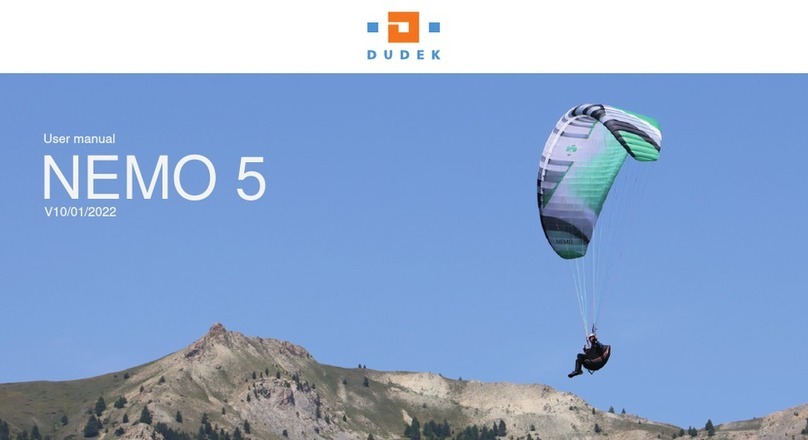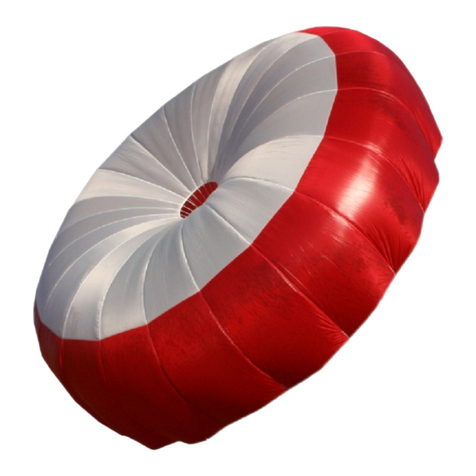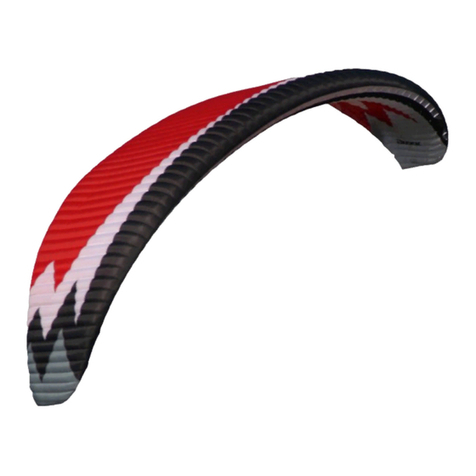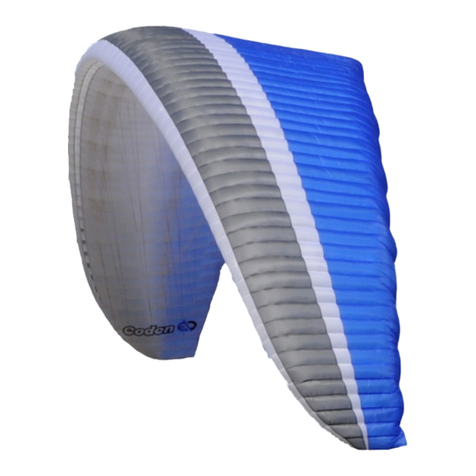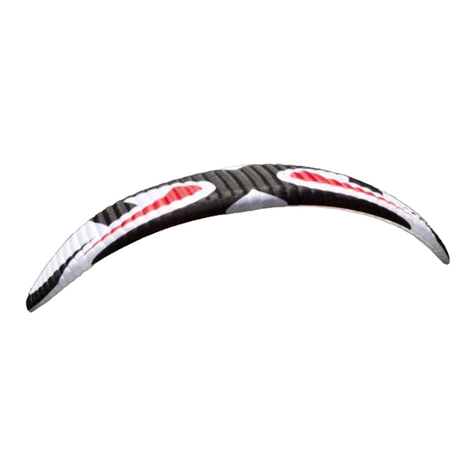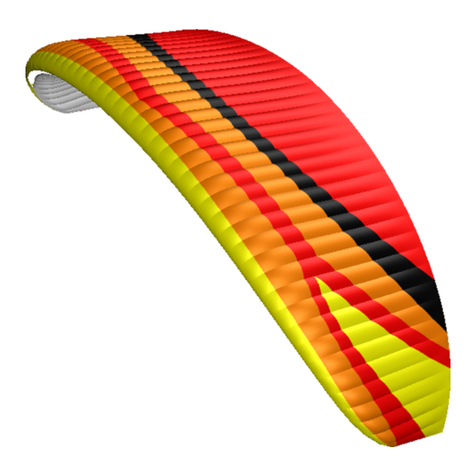
on the wing
4
For whom the Run&Fly?
We’ve designed the first ever wing under 1 kg (986g), meaning it’s
the lightest and most compact aircraft of the world. It is much more
intuitive than a normal paraglider, at an affordable price at that.
The Run and Fly is not a typical paragliding canopy: it has a single skin.
Therefore it’s lighter while displaying much stronger tendency to stay
over head and recover from any surges than a regular paraglider. In this
way, the Run&Fly offers safe take-offs, great maneuverability in flight and
smooth landings. It is exceptionally light, so that you can carry the wing
on your back during trail running or climbing sessions almost without
noticing the load. It is so compact, that it fits in a 4-litre bag. The Run and
Fly is perfect for trail running, hike & fly and necessary travelling, or just
as a second wing you will always have with you (you can easily place it in
your hand luggage while travelling by plane).
DESIGN
Designed by JB Chandelier, Team Dudek and Jacques Peugeot (airframe
sizing engineer), in close collaboration with Porcher Sport, the Run&Fly
project had been a real challenge for us. We decided to set ourselves
very aggressive goals in order to propose a really different, outstanding
product. The main specifications were a total weight below 1 kg (the
internal project name was 999gr), with speed and flare comparable to
standard wings. The wing also had to be affordable, in order to give
access to the sky to a wider public. With such an ambitious target, we
knew we couldn’t simply “make another single skin wing”: we had to
think out of the box. As a result, the Run&Fly needed hours and hours of
engineering discussions, debates, analyses, comparisons and numerical
simulations, then obviously completed with a lot of flight & load tests.
Ultimately, the wing turned out to exceed our expectations. The biggest
mono skin problems have been resolved; Run&Fly has good speed, nice
landing and offers a lot of fun. Besides reaching our goals we also
achieved a good glide ratio - above 6. Although we usually avoid
publishing the glide ratio of our paragliders, because this parameter is
sometimes subject to manipulation, we made an exception with Run &
Fly. We want to give potential pilots at least a rough understanding of
what they can expect from the fact that such an innovative wing exists.
IMPORTANT: Run&Fly belongs to the single-surface canopy
class. There is fundamental difference between classic double skin
and modern single skin canopies. All the launch, landing and
steering techniques look a bit different. If you are an established
paraglider pilot, you shouldn’t have any problems with adapting
to the wealth of new possibilities brought to you by the Run&Fly.
However, this doesn’t work both ways: if you started your
paragliding experience with the single-skin gliders, be aware that
you are not qualified to safely fly standard double-surface
canopies.
!
